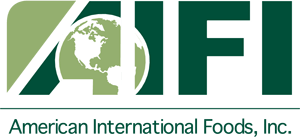Analyzing Tomato Production: Weather Variations, Expanded Planting, and the Impact on Tomato Prices
The spring season in California has seen below-average temperatures, resulting in a delayed start for tomato planting. While some planting remains to be completed, the season’s kickoff has been pushed to the second or third week of July. As a consequence, tomato volumes in July are expected to be significantly lower, with a larger quantity anticipated in October compared to historical records. The outcome of this crop, like any other in agriculture, heavily relies on favorable weather conditions during the remaining growing and harvesting period.
According to the latest contracted tomato report released by NASS on May 31st, the projected crop stands at 12.7 million short tons across 254,000 acres. Despite improved water supply leading to additional planted acres, normal harvest schedules have been disrupted. While it is still too early to make definitive predictions, industry experts do not anticipate the crop exceeding 12 million short tons.
Overall costs for tomatoes have surged over 30% compared to the previous year, leading to concerns about potential implications for the crop. The increased prices have sparked apprehension among industry observers, who speculate that the spike in prices might be indicative of a challenging tomato season ahead.
Key Market Takeaways
Farmers in the United States have planted more acres of tomatoes than initially anticipated. This is explained by the improved water availability from the drought break in California, the nation’s leading tomato producer. Processors had to pay farmers 3-% more to plant their tomato crops this year than last year. Additionally, they had to pay farmers an extra $33/ton for raw tomatoes this year. Raw tomato costs make up 50% of final product price, so this price increase impacts tomato paste pricing by $0.10/lb alone. These factors will heavily influence inflated processed tomato prices this season.
The decision to plant more acres is likely a response to the anticipated high demand and increased market value of tomatoes, along with there not being a lot of carryover from last year’s harvest. Farmers, recognizing the potential profitability, seized the opportunity to capitalize on favorable growing conditions and leverage the enhanced water supply to their advantage. This unexpected surge in planted acreage indicated the resilience and adaptability of farmers in strategizing ways to maximize production opportunities.
However, it is important to note that despite the increased acreage, concerns remain regarding the overall crop outcome. The delayed planting schedule due to the below normal temperatures and the uncertainty surrounding weather conditions during the remaining growing and harvesting window post ongoing challenges. Therefore, while the expanded acreage is a positive development, it does not guarantee a bumper crop, but even if there is a bumper crop, processors are likely to lower prices below 30% of last years. This is due to the increased cost of raw material they were required to play.
How AIFI Can Help You:
With industry changes and challenges you can trust American International Foods for supply continuity, competitive pricing, and availability of 2500 different ingredients. Despite this year’s uncertainty of processed tomato goods, you can rest easy with AIFI as your reliable supplier. We have built sustainable relationships domestically and internationally to provide you with competitive processed tomato pricing. Our mission is to help you overcome industry challenges with our comprehensive range of services. We offer on-demand documentation to ensure your products meet or exceed all industry rules and regulations. Our nationwide network of 15 warehouses will ensure that your inventory remains stocked, our across the globe sourcing network will ensure supply continuity, and we offer competitive pricing and bundling options to save you money.
Contact us for current market updates, and to discuss how we can help secure your processed tomato supply.
In the end, Mother Nature rules the roost.

